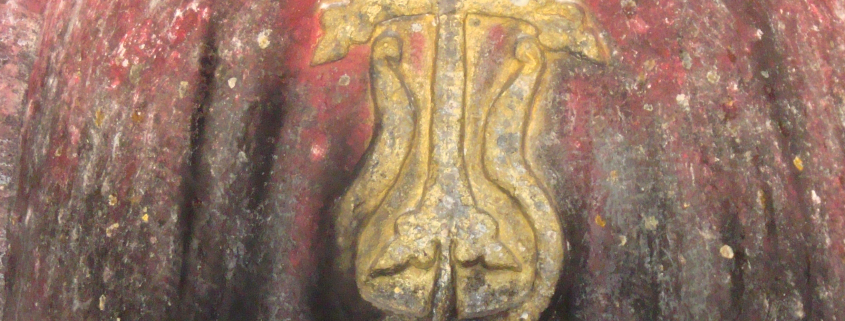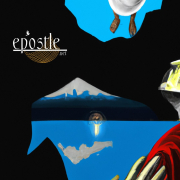Christian Courage – Archbishop Tiran
Armodoxy for Today: Christian Courage
Archbishop Tiran Nersoyan, of blessed memory, was one of the brilliant minds of the Armenian Church in the 20th century. His accolades are many, but among the top was his vision for having an Armenian seminary in the United States. He founded the St. Nersess Armenian Seminary. Intellectually, his translation of the Holy Divine Liturgy (1950) is still the foundation upon which other translations are offered. He was elected Patriarch of the Armenian Patriarchate of Jerusalem, and served as Primate of the Eastern Diocese.
He was brilliant and sharp. In his senior years he would attend Summer Conferences at the St. Nersess Armenian Seminary, where young students would have the chance of a lifetime to engage in conversation with him. To many of us, he was a walking encyclopedia of the Christian Church, and the special volume on the Armenian Church. He was a pioneer in many respects. As a bishop he courageously challenged some of the rules of the Church. For instance, as a Primate he saw the tremendous need for clergy in the post-Genocide diasporan church and so he ordained a group of priests before they were married. One of the laws of the church is that if a candidate for the priesthood is to marry, marriage must take place before ordination. But as a primate he made the decision that the need for priests outweighed the respect of the rule. The Church refers to this as economia which allows for discretionary deviation from the letter of the law in order to adhere to the spirit of the law and charity. It takes clear vision and courage to takes these bold steps and Archbishop Tiran’s choice to ordain the priests were truly an act of economia.
In 1989, I was pastoring the St. Andrew Armenian Church in Cupertino, California. We published a small newsletter called The Nakhagoch (meaning the “First Call” a play off of St. Andrew the Disciples nickname of being the Nakhagoch, that is, the first called disciple of Jesus Christ. Each edition of the paper would include my pastoral message and commentary about social events. Archbishop Tiran wrote me that year. I had met him only casually, but to receive a letter by the revered archbishop, for me, was like being called out at a concert by the superstar on the stage because he said he recognized you! Me? Yes, you!
The letter was an invitation to edit a theological journal for the St. Nersess Seminary. Archbishop Tiran had read my articles and wanted to place me in charge of a journal for religious thought at the Seminary. In particular, he had read a piece I had written for the San Jose Mercury News about the 1988 film, “The Last Temptation of Christ.” The film was based on Nicholas Kazantzakis’s book by the same name. Kazantzakis was better known as author of “Zorba the Greek.” I had read the “Last Temptation” in college and it helped me form much of my expressions of theology. The epic movie, directed by Martin Scorsese, hit the theaters that year and was causing a stir. Christian groups and churches were protesting the movie – threatening to close down theaters and sponsors – because the film dared to present Jesus in human light. The last temptation of Christ, Kazantzakis imagined, was Jesus on the Cross, being approached by the Tempter, who offers him a “normal” life, with wife and kids, if he abandons the Cross. Spoiler alert: he doesn’t. But that didn’t seem to matter with the movie-going public of the time.
Kazantzakis’s story flirts with Christology, a topic which divided the Christian Church, particularly in the early centuries. In seminary we studied the Council of Chalcedon (451AD) and the variations of Christological expressions extensively. I was not about to touch any of these points in a newspaper article, rather I questioned our fear and doubt. Why would we be afraid to think and struggle with our Faith? And especially with the main character of our Faith, namely Jesus Christ? Receiving Archbishop Tiran’s letter – the foremost authority on our Church’s Christology – and his approval of the article and my positioning, was a boost of confidence that I needed at that early point in my ministry. Even more, his encouragement emphasized the need the bridge the gap between theoretical and practical theology.
Jesus came to us. Jesus lived in a real world and spoke to the issues and problems of this world. He made the Divine Realm accessible to everyone. As a Church, we pray, Thy Kingdom come, Thy will be done on earth as it is in heaven. It takes Christian courage to be the instrument to bring thy will from heaven to earth.
Tomorrow, we’ll look at what happened when I accepted Archbishop Tiran’s invitation. and found myself in a place that was too deep. Join me.



 2024 Fr. Vazken
2024 Fr. Vazken 2024 Fr. Vazken
2024 Fr. Vazken
 2014 Gregory Beylerian
2014 Gregory Beylerian Fr. Vazken 2021
Fr. Vazken 2021


 2014 Greg Beylerian
2014 Greg Beylerian
Leave a Reply
Want to join the discussion?Feel free to contribute!